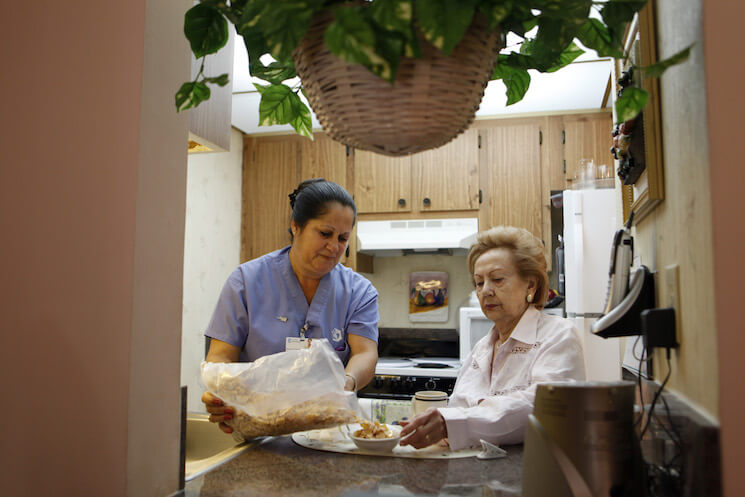Investing in social infrastructure as an anti-recession tool

A new report by the UK Women’s Budget Group offers important advice for what we should do here in the United States when the next recession hits. While spending more on physical infrastructure projects such as bridges and highways is the traditional way to help revive a faltering economy, the Women’s Budget Group argues that government investment in “social infrastructure,” including education, health, and care work, will produce more bang for the buck.
The report begins with a straightforward presentation of the case for fiscal stimulus. When the economy is in recession and unemployment is high, the government can make up for the shortfall in demand in the private sector by increasing government spending. Hiring labor and purchasing inputs to carry out designated projects, frequently related to physical infrastructure, provides a direct boost to demand in the economy. Once the incomes of those working on the new projects or selling inputs to them rise, the multiplier effect of additional consumption kicks in, as those first-round beneficiaries go out and spend more themselves. This is how a well-timed increase in government spending can jump-start the economy.
The main value of the report is its analysis comparing a traditional stimulus plan focused on physical infrastructure with one focused instead on care work, including care for the elderly, the disabled, and preschool-aged children. Concretely, the report estimates the impact that a large government spending program focused on either physical or social infrastructure would have on employment and GDP. While the report was written in the United Kingdom, the Women’s Budget Group conducted the analysis separately for seven countries, including the United States.
To check the robustness of their findings, the researchers conducted two separate modeling exercises. One is based on input-output tables produced by national statistical agencies, which look at the kinds of inputs different industries (construction versus education, for example) use to produce the goods and services they sell. The other is based on a large-scale, private-sector macroeconomic model developed by Cambridge Alphametrics.
Under both modeling approaches, a large-scale investment program focused on social infrastructure yielded substantially more employment than one limited to physical infrastructure.
Using the Women Budget Group’s estimates of the direct effects based on national input-output tables for the United States, government investment in social infrastructure equivalent to 2 percent of GDP would raise employment rates by about 3.4 percentage points, compared to only 1.2 percentage points for a similar investment in physical infrastructure. Counting indirect effects—which include goods and services used in construction or providing care work—the employment impact increases and care work retains roughly a 2-to-1 advantage (a 4.0 percentage-point rise with care work compared to a 1.9 percentage-point rise for a construction-based stimulus). The Cambridge Alphametrics model independently suggests that the relative advantage of social infrastructure investments also holds in the medium and longer term.
The economic logic behind these findings is simple: Social infrastructure is much more labor intensive than physical infrastructure. A given investment in social infrastructure will create more jobs, in care work and elsewhere in the economy, than a similarly sized investment in physical infrastructure will create in construction and other sectors. (This does not mean that investment in physical infrastructure won’t create jobs—the analysis shows large job gains there, too.) And as the Women’s Budget Group also points out, care jobs are much more likely than construction jobs to employ women.
The lessons here go beyond responding to the next recession. If Larry Summers is correct that we may be in a period of “secular stagnation” with chronic deficiencies in demand, a large-scale investment in care work could give the U.S. economy the boost it needs to get to—and remain at—full employment.
